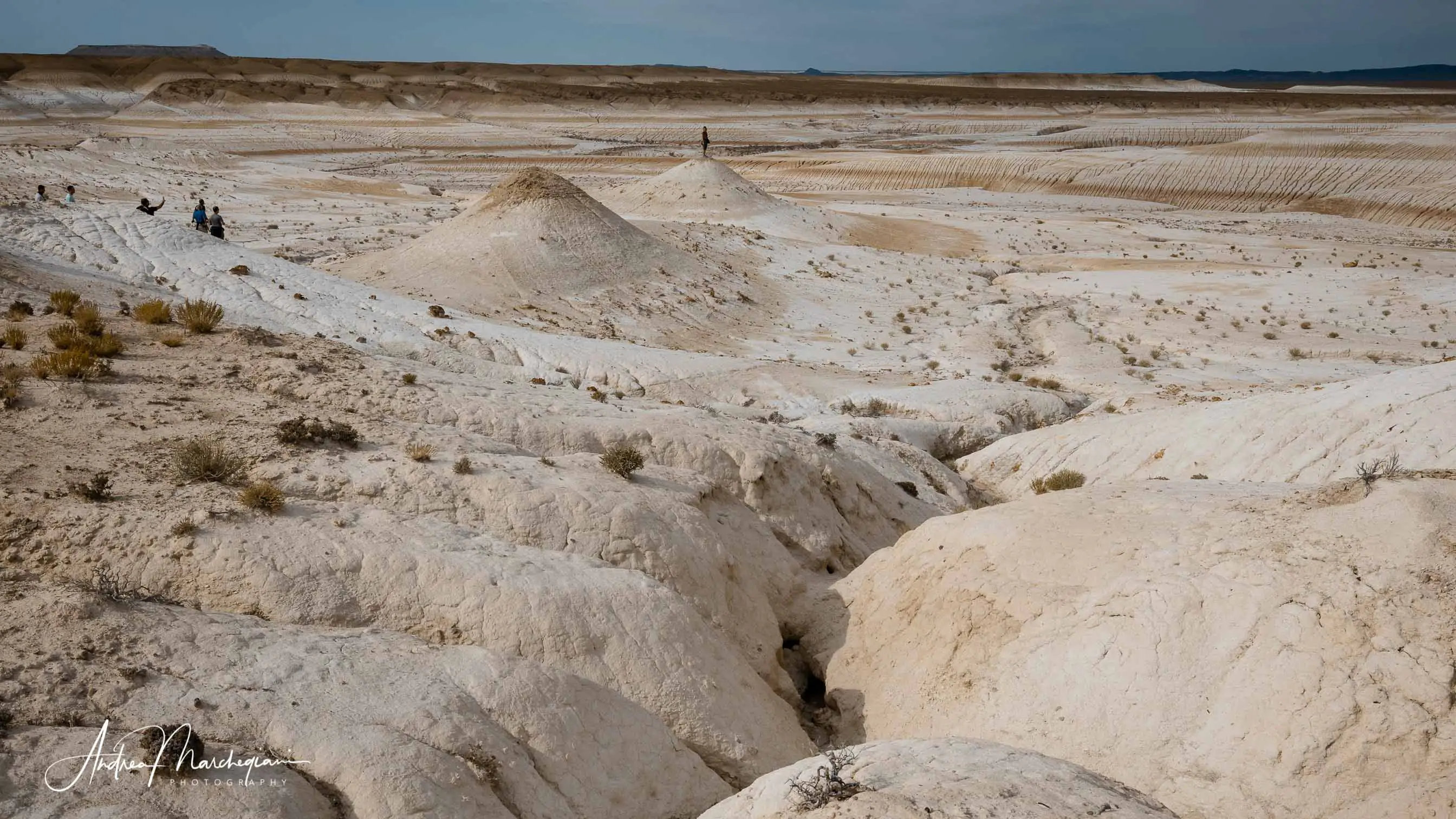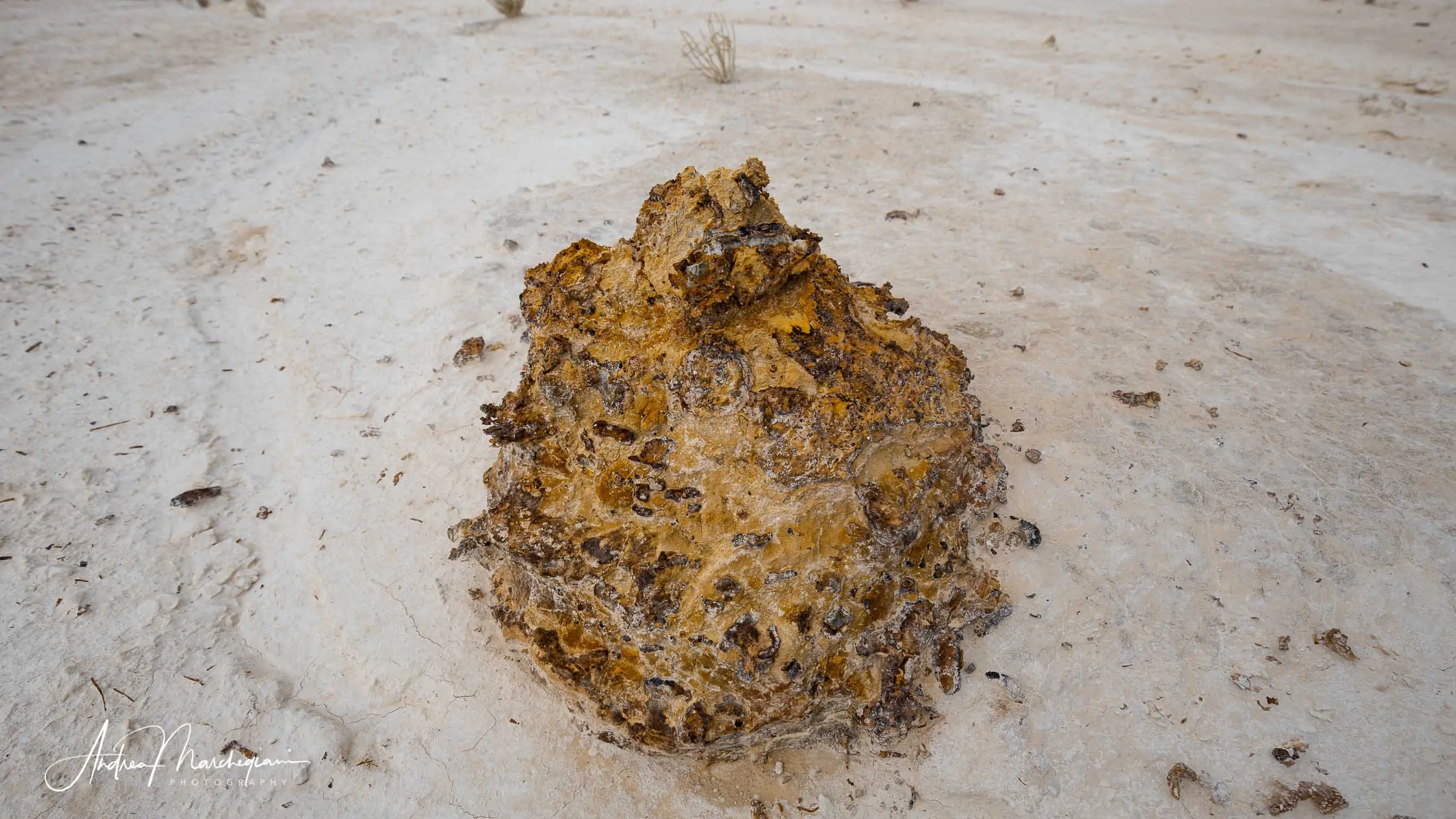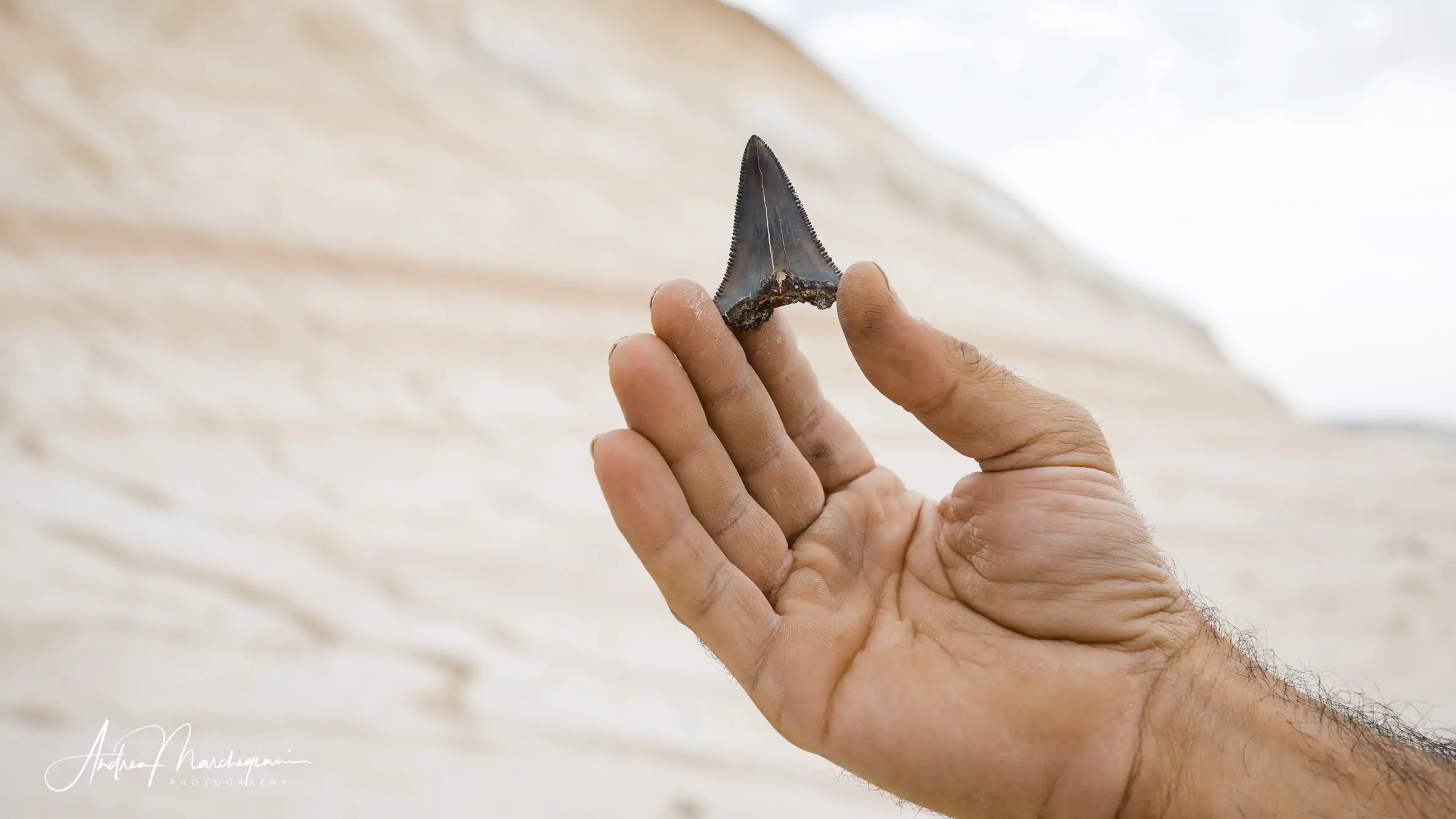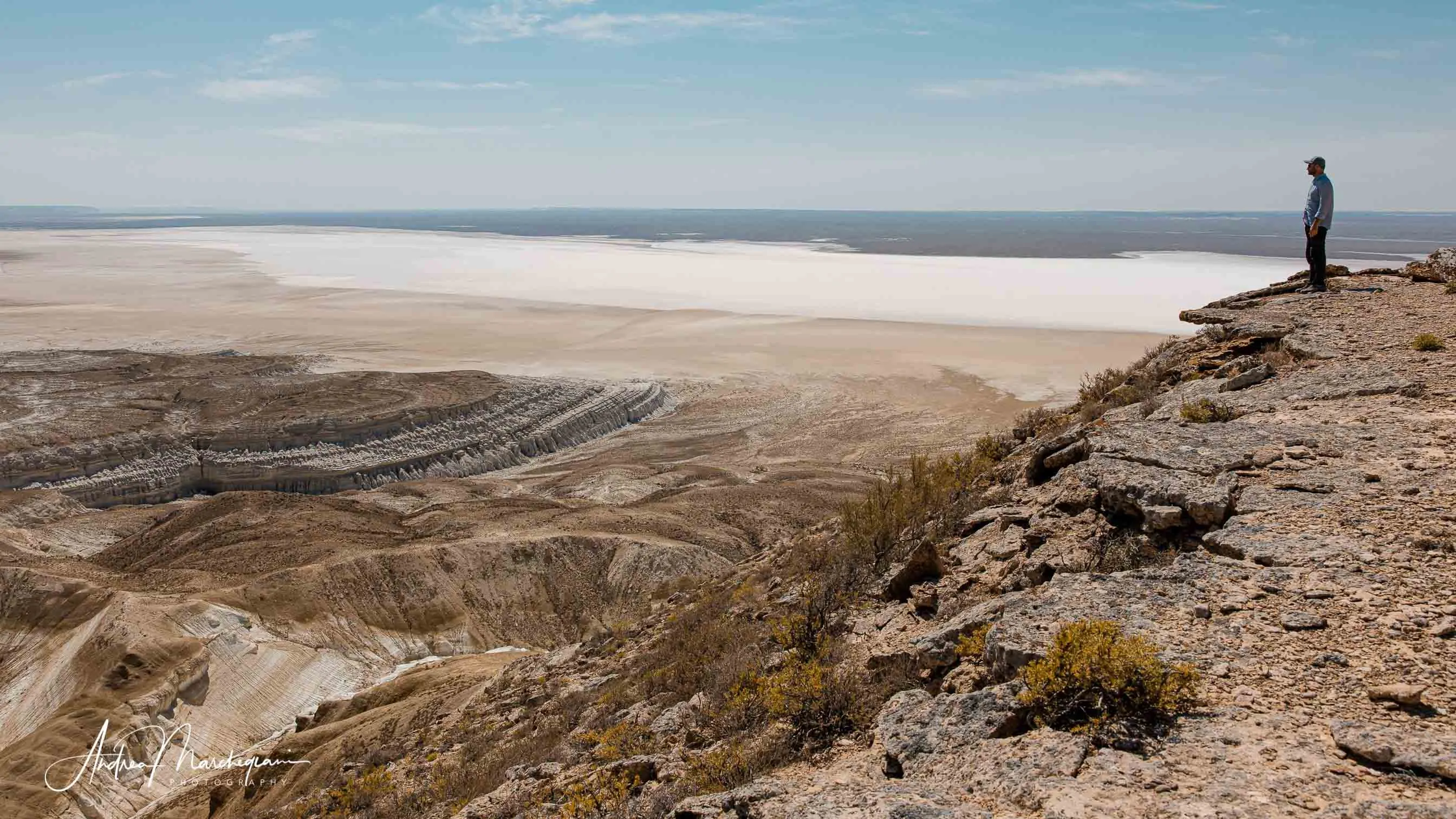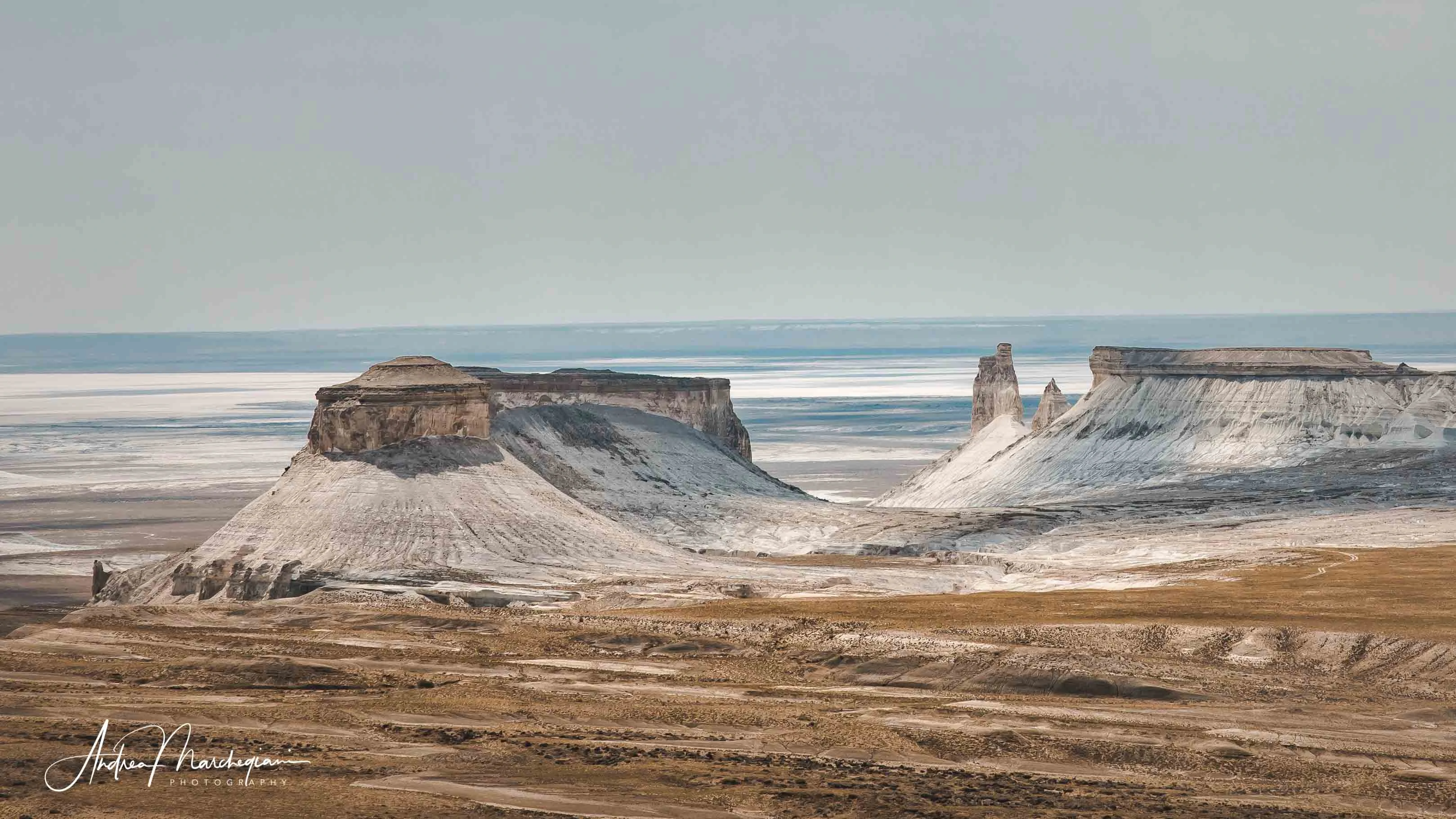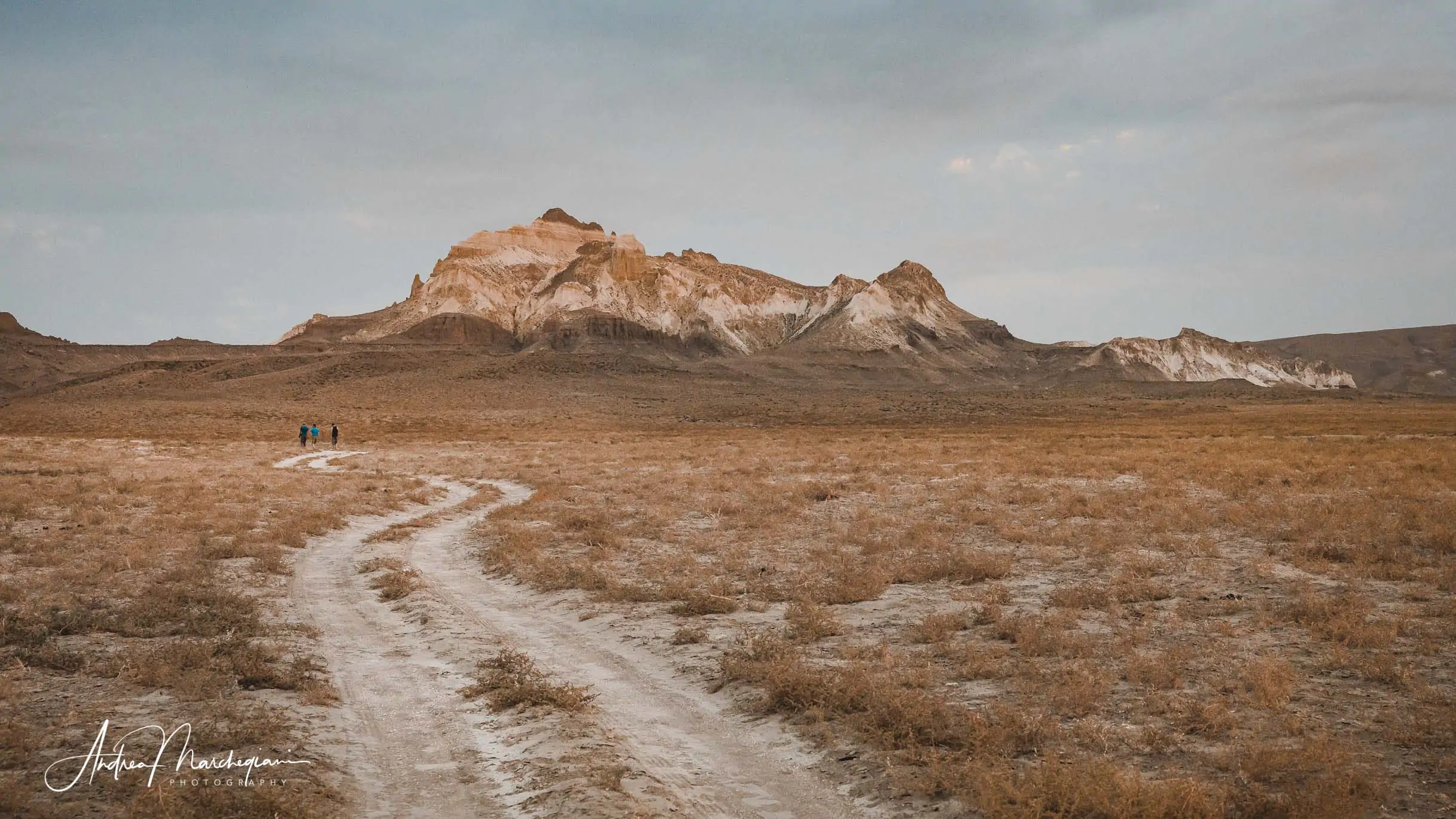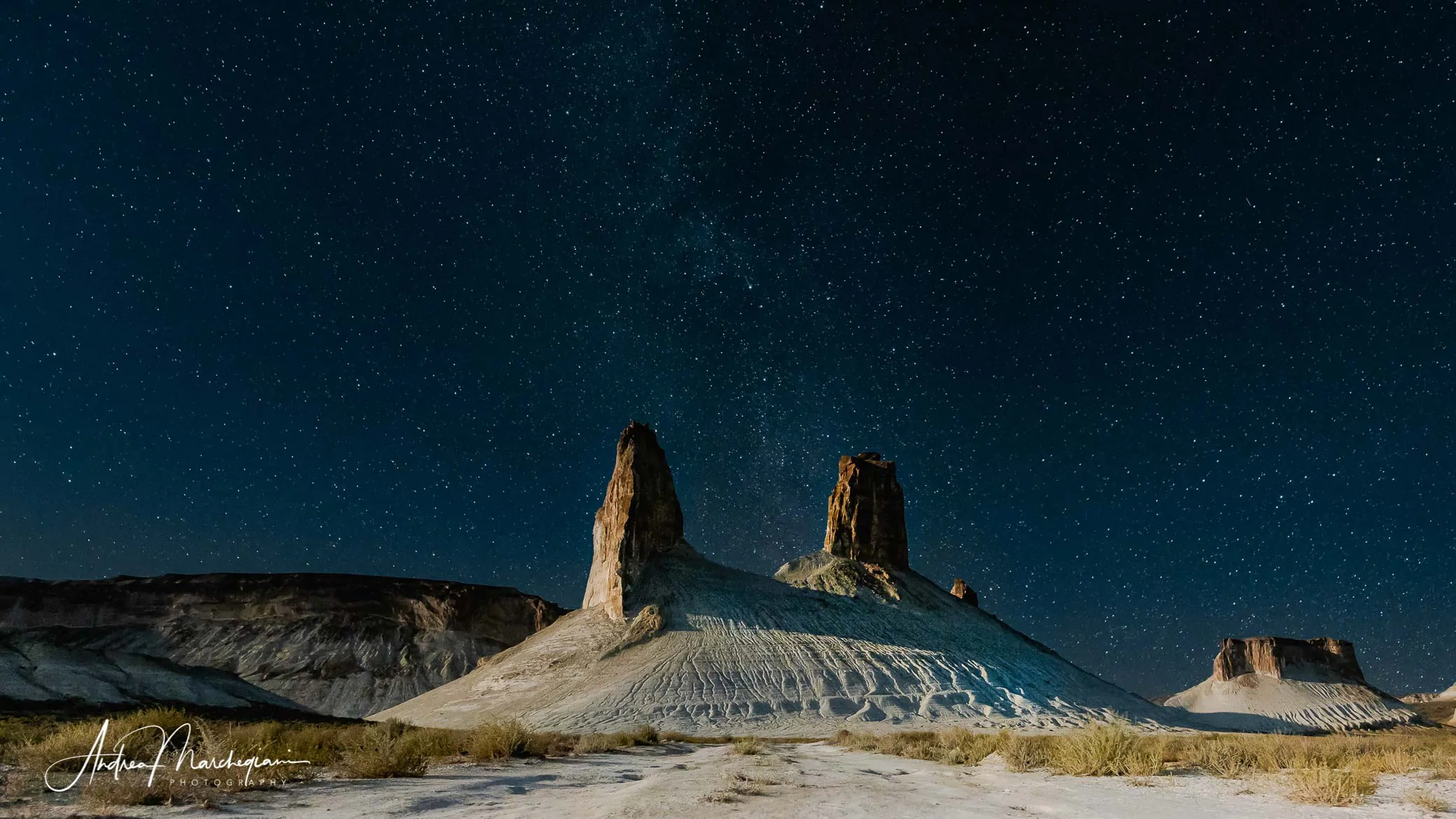
- Home
- Photo Galleries
- Portrait Photography
- Landscape Photography
- Street Photography
- China
- Ethiopia
- India
- Holy Ganges
- Varanasi
- Varanasi Ganga Aarti
- Varanasi, Manikarnika Ghat
- Varanasi Streets & Alleys
- Varanasi Demolition
- Varanasi Fruit Market
- Sarnath
- Brick Kilns
- Tamil Nadu, Chennai & Mamallapuram
- Tamil Nadu, Fort Tirumayam & Madurai
- Tamil Nadu, Tiruvannamalai & Thanjavur
- Kerala, Munnar
- Kerala, Peryiar
- Kerala, Backwaters
- Kerala, Kochi
- Kazakhstan
- Myanmar
- Senegal
- Uzbekistan
- Travel Blog
- China
- Ethiopia
- India
- Tamil Nadu & Kerala
- Varanasi
- Whato to do in Varanasi
- Varanasi Life along the Ghats
- Varanasi Death along the Ghats
- Varanasi Ganga Aarti Ceremony
- Varanasi demolished to honor Shiva
- Varanasi Fruit Market
- “Varanasi, A Journey into the Infinite”
- Sarnath
- All about River Ganges
- Holy Shit. All about Indian Cow Dung
- Clean India Project
- Brick factories
- Tilaka, pundra, bindi: what is the mark on Indian foreheads?
- Kazakhstan
- Mongolia
- Ulaanbaatar, the coldest capital in the world
- What to do in Ulaanbaatar
- Chinggis Khan Museum, 6 floors of Mongolian history
- Gorkhi-Terelj National Park and Bodgkhan Natural Reserve
- Altai Mountains, Things to do in Olgii and Sagsai
- Living with the Eagle Hunters
- Sagsai Eagle Festival
- Navrus Festival
- Xöömej, Mongolian throat singing
- Mongolian Food
- Myanmar
- Senegal
- Uzbekistan
- Latest Posts
- Photography Blog
- About
- Prints
Tourists look at me in amazement and ask me, “What are those mountains called?” They’re called Kyzylkup, but nobody ever remembers it, so I say, “It’s the mountains of the tiramisu!”
– Sergey Khachatryan
Share with your friends:
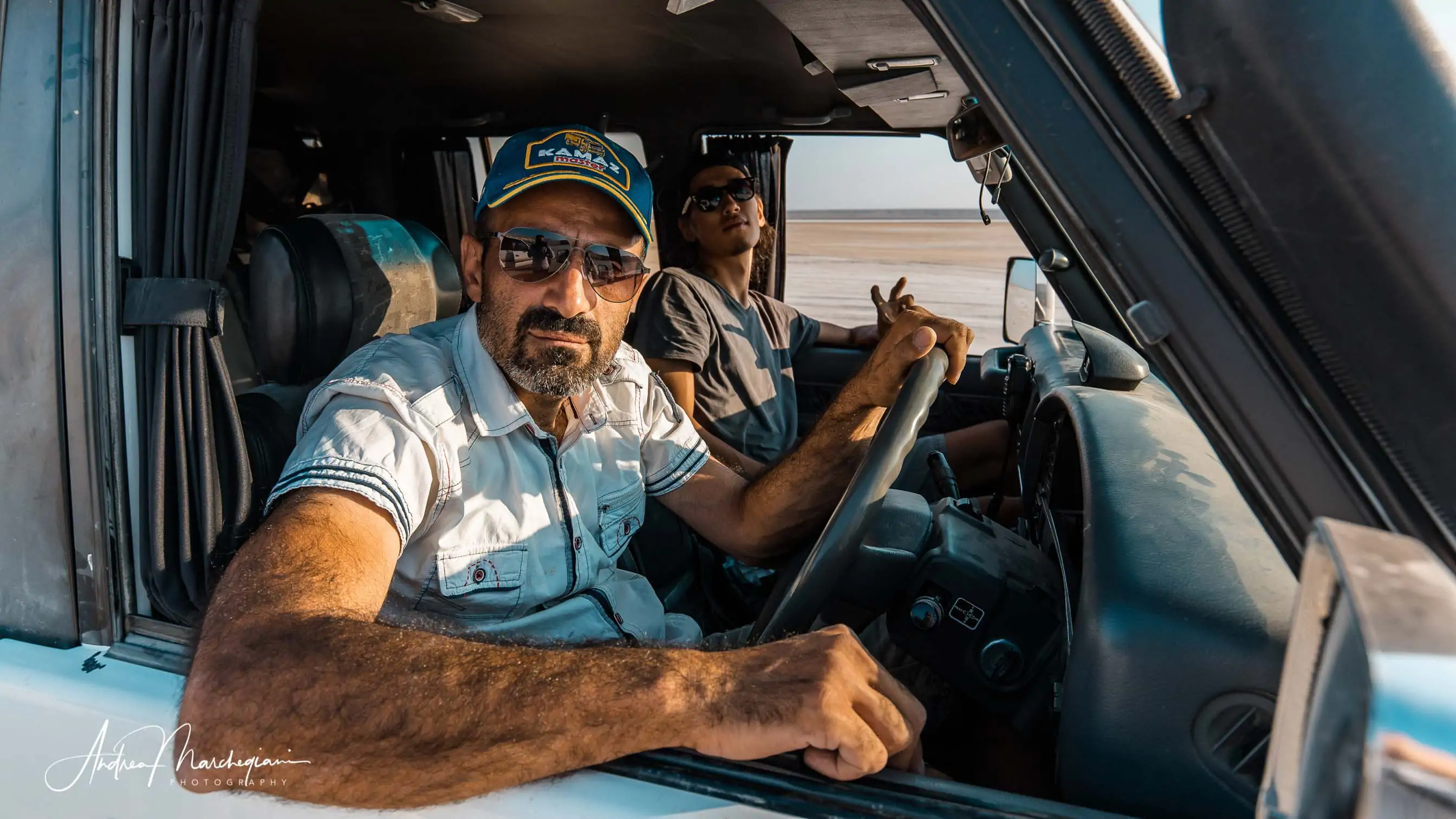
Happy to live in Mangystau
I’ve been in the Mangystau Desert in Kazakhstan for the last few days, and I think I’ve figured out one thing. When you find a place so forgotten by man, surrounded by such a majestic nature, you begin to feel at peace with yourself and with the world. In Mangystau there are only a thousand tourists each year. It is easier to come across a camel than another human being. In that case, the fact of belonging to the same species immediately makes you friends.
Sergey Khachatryan, our guide, is a happy and tireless man. He gets up at dawn before anyone else, prepares us breakfast, then takes us around on strenuous roads until sunset, when he chooses a place to camp; he helps us set up tents and organizes dinner. He always wears his camera around his neck and takes pictures of us all the time. He should ask an extra for the service, I think. Sergey photographs us at every stop, without ever losing his smile. As soon as he has a free moment, he opens the laptop and downloads the photos from the memory card. “Before saying goodbye, I’ll give you all the files!”, he says every time. I don’t know how to respond to such generosity.
It’s clear that Sergey loves his work and protects every rock in these wastelands. Every moment of the day, he is excited like a child in front of every view. Perhaps all it takes to be happy is an old SLR with poor performance, a dusty change of clothes and a jeep with a full tank. Sure seems to have worked for Sergey.
Kyzylkup, aka Tiramisu Mountains
Today he is taking me to the Tiramisu Mountains, a place as extraordinary as it is unknown. There are no road signs leading us here, and the dirt roads really look all the same. I heard that not even locals know these rock formations. The jeep stops at a vantage point. A valley with soft reliefs stretches from end to end of the horizon. Afternoon light makes the shadows appealing.
“See how the soil mottles brown. Seen from up here, it looks like a splash of cocoa powder”, comment.
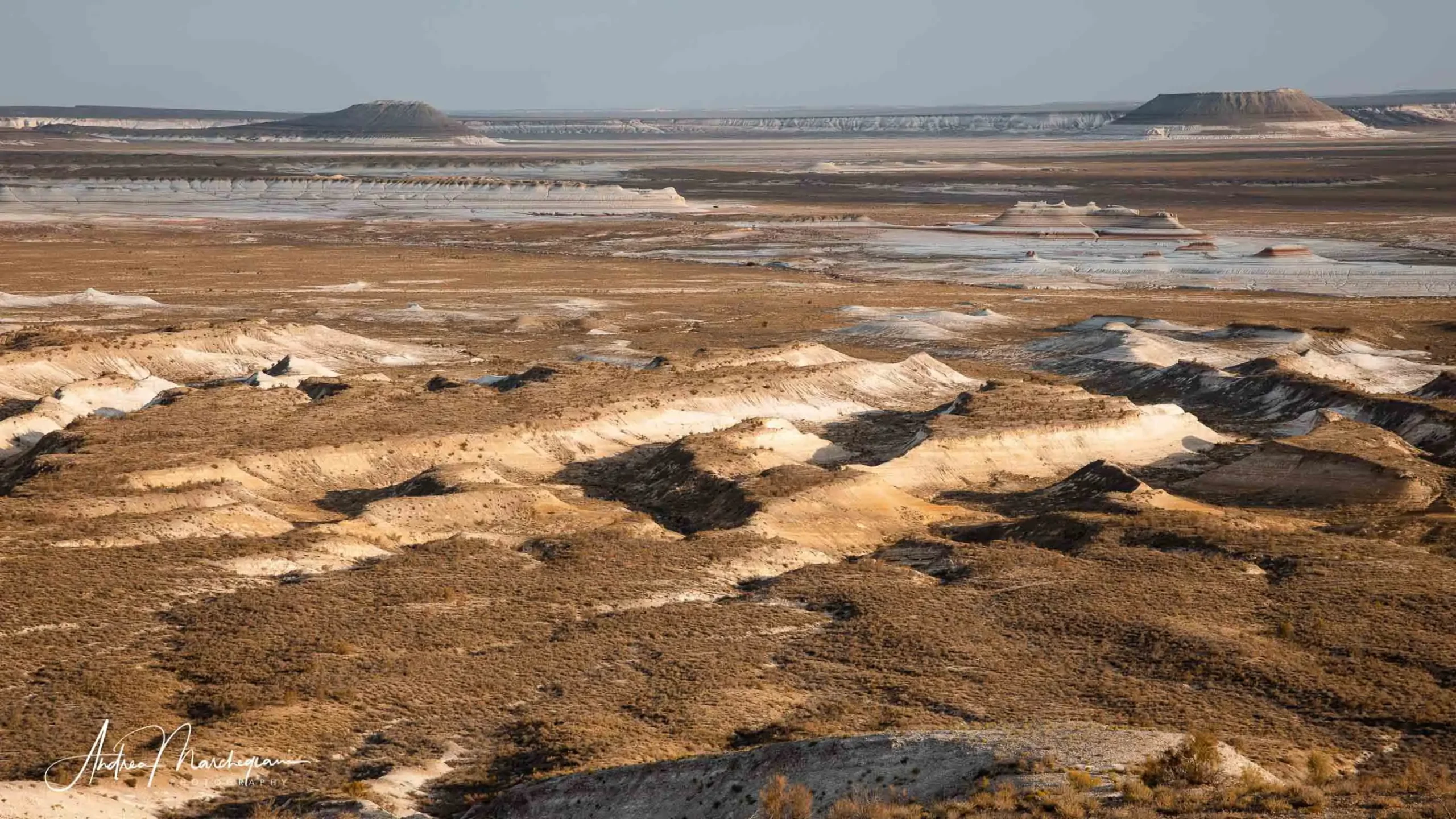
“Andrea!” Sergey approaches me with the face of a child who has just done a mischief. ” These are the mountains of tiramisu!”
Before I left, I searched the internet for some information about this place. I didn’t find anything, except a Chinese girl’s travel diary and a tour operator’s editorial. Both sources could not provide precise details of where it was, except it being located in the Karakiyansky Rayon district; and they did not know the exact name, but they called it “Tiramisu Hills”.
“I named this place!” laughs Sergey.
“What? You named a mountain?”
“Yes! A tourist once asked me the name of these mountains. They are called Kyzylkup, but nobody ever remembers it. So I told her it was the mountains of tiramisu! From that moment, we all started calling them that”.
It does look like a tiramisu! The hills slope gently and the soil alternates the colors of cream and cocoa… it looks like a mascarpone cream!
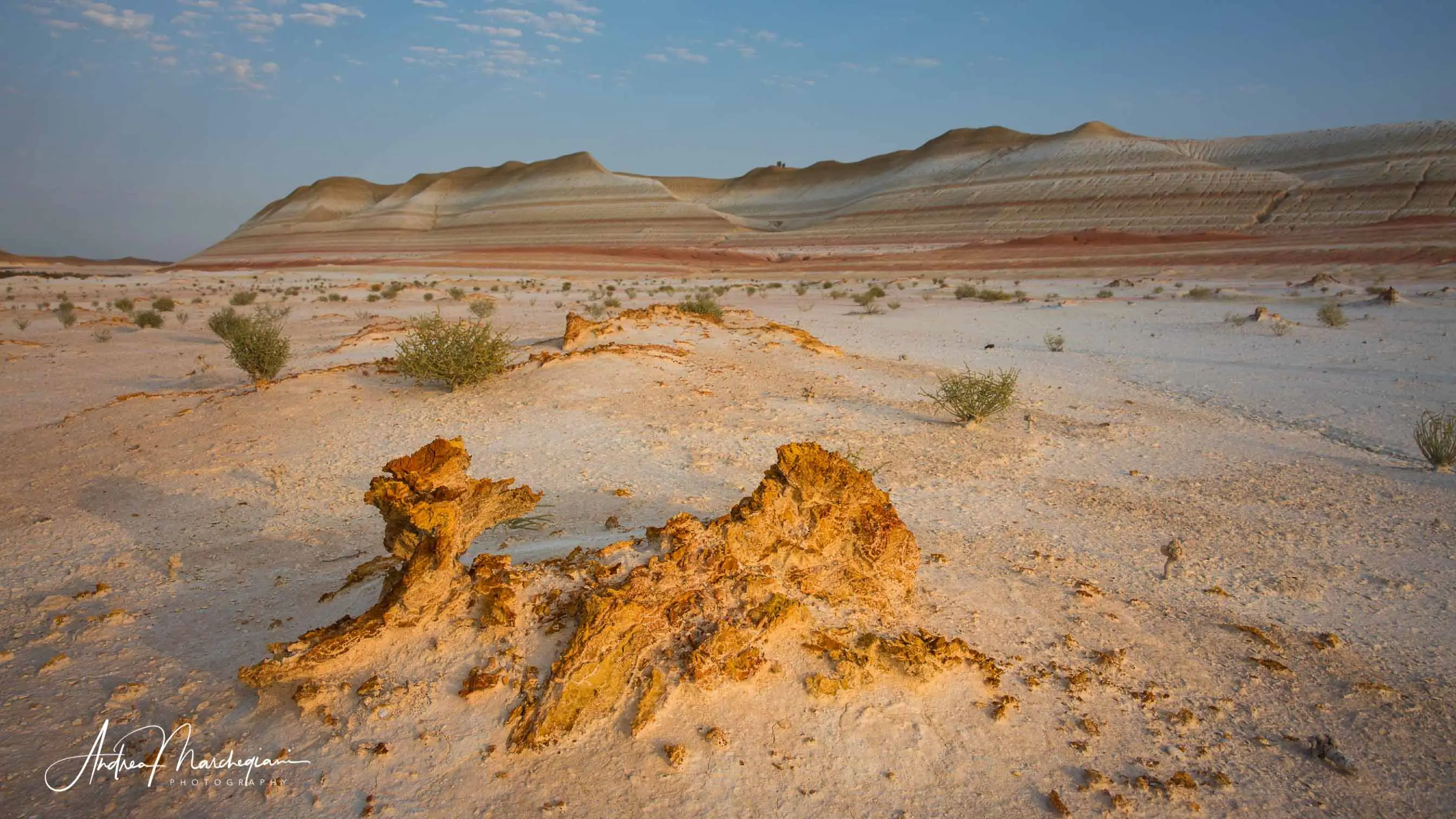
“The tourist, however, was still not satisfied and asked me why some streaks were pink”, continues Sergey. “Because we put strawberry syrup! In fact, that mountain there is called Strawberry Tiramisu!”
Sergey exchanges a look of understanding with Aset, the interpreter, and the other drivers. Everyone nods amused.
I have no words.
I enjoy the idea that a tour guide who lives in a place forgotten by the world can invent a name for a place that no one can remember and this name begins to spread online.
“I’m sure you’ll be remembered by posterity as the man who baptized this place!” I say, taking him by the arm. ” As soon as I get home, I’ll write about you, Sergey, and your great deeds!”
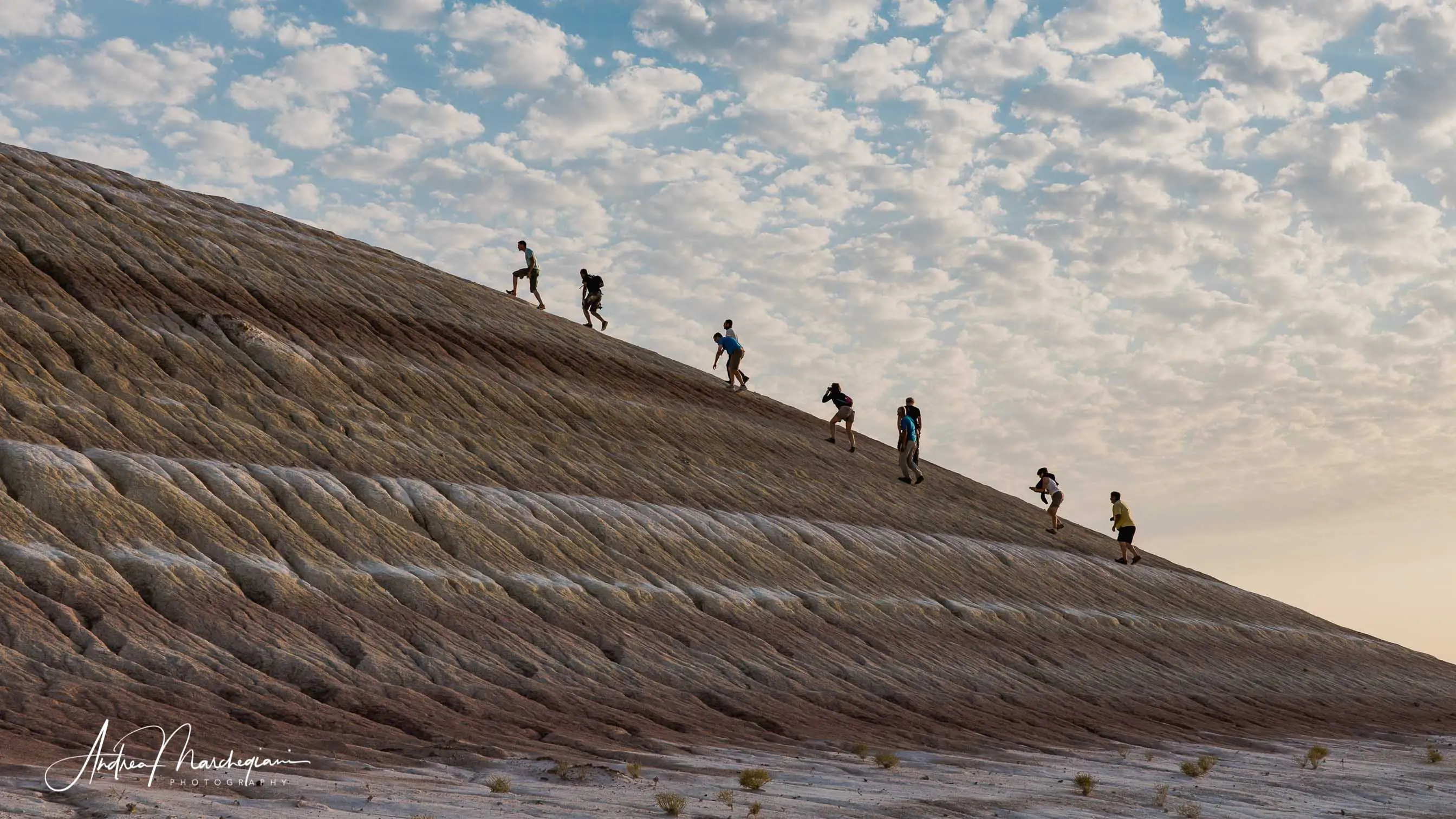
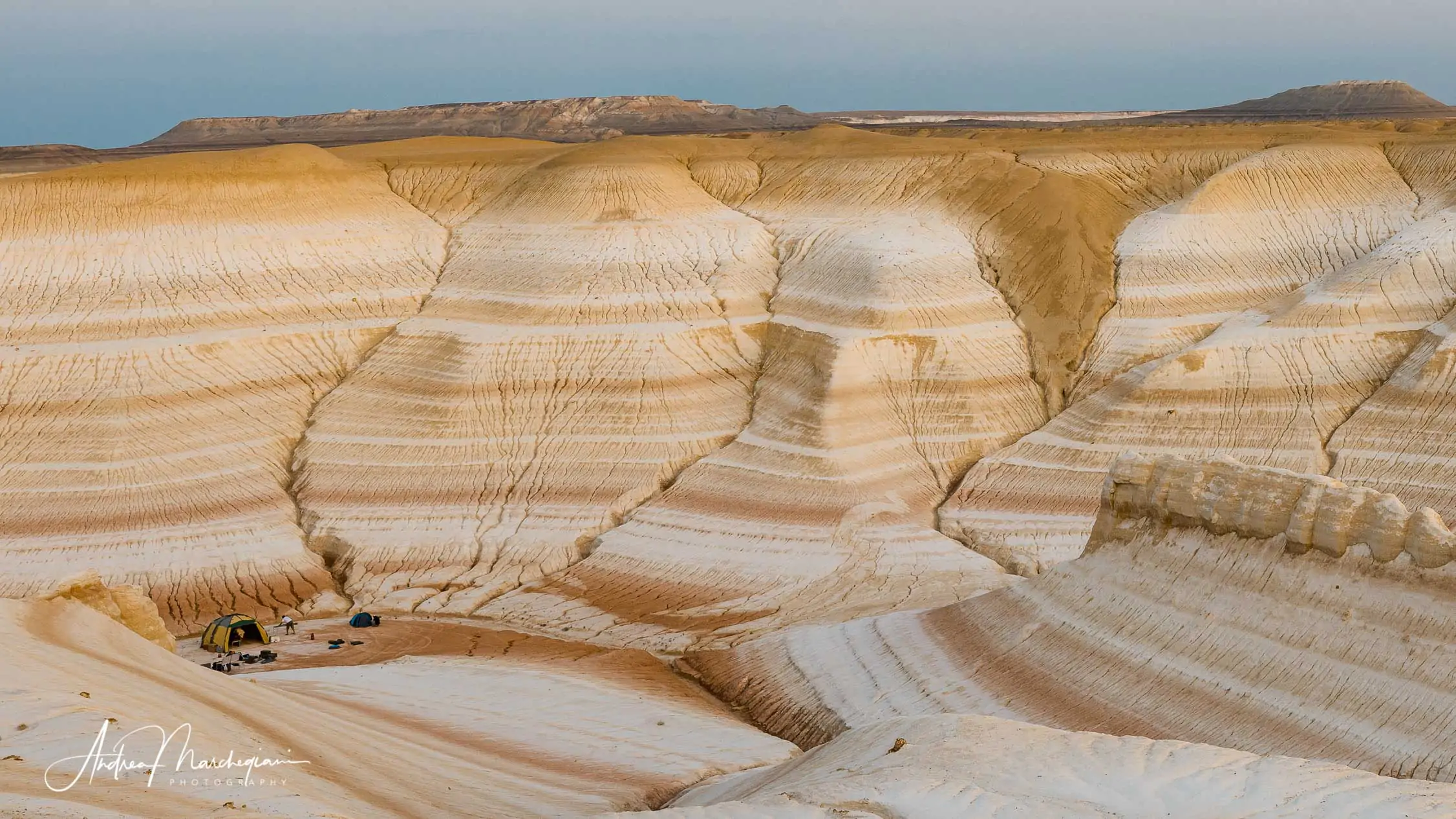
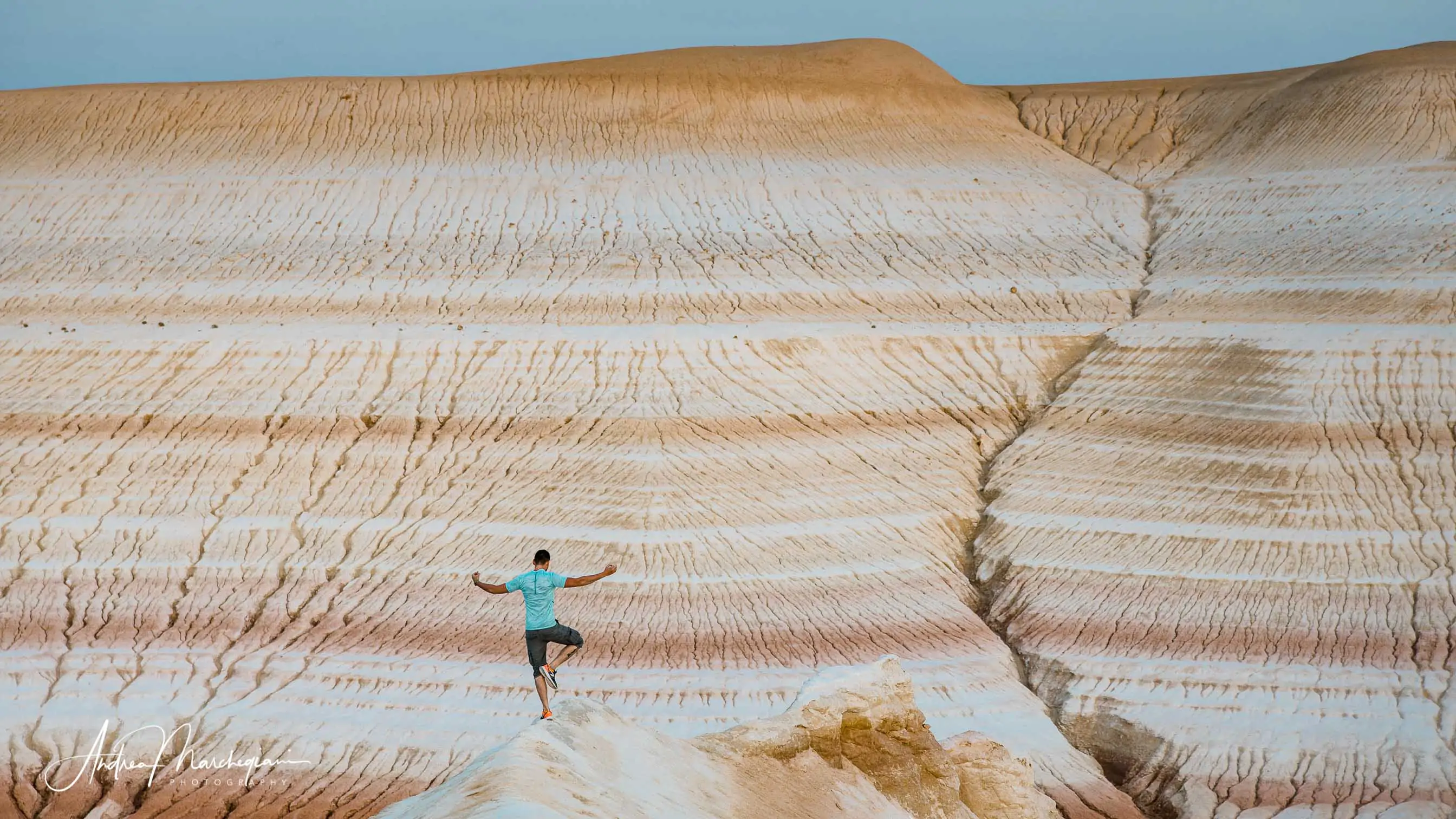
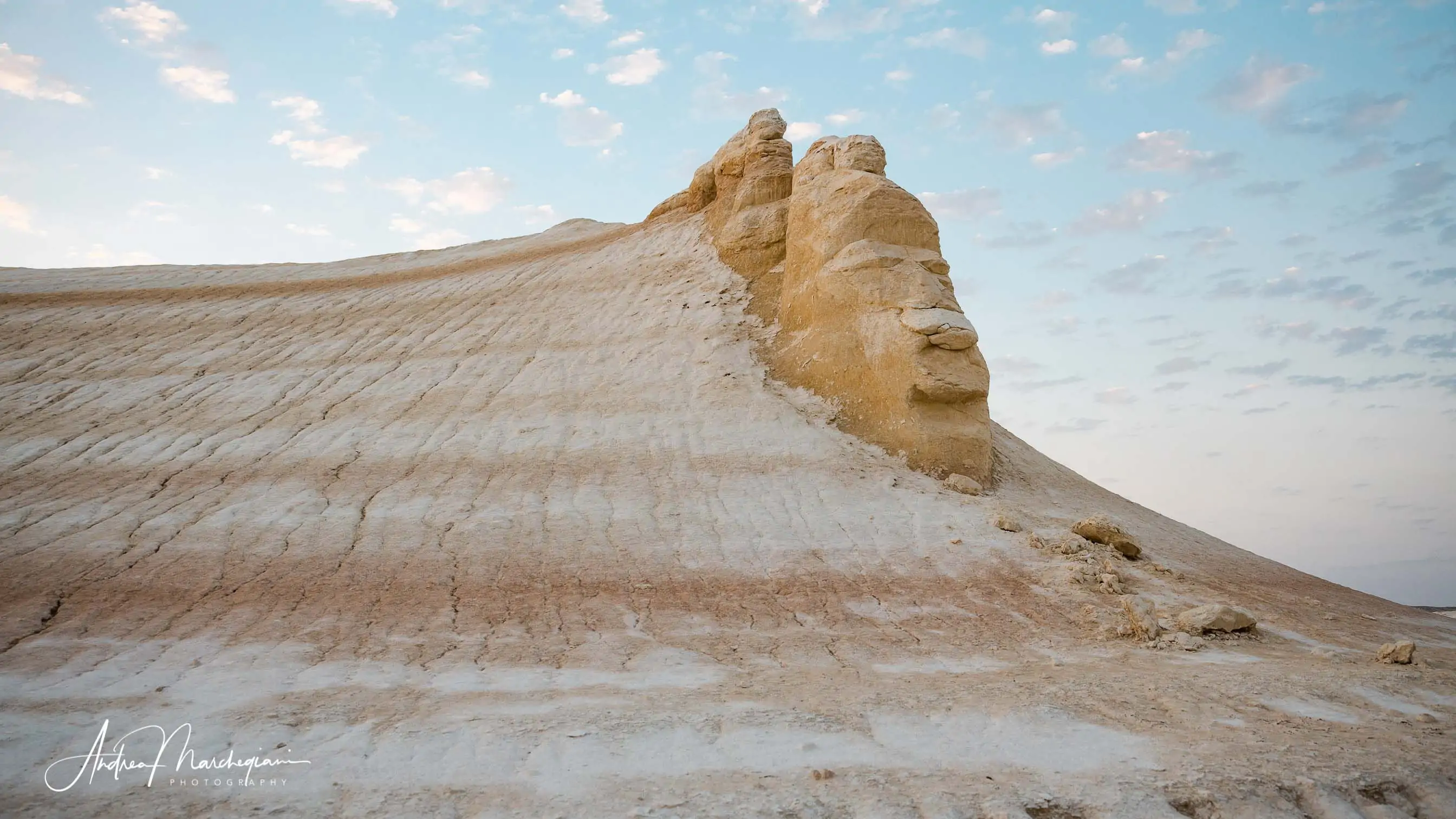
We get back in the car and head for the Tiramisu Mountains. Tonight we’ll camp right at their feet.
Seen up close, the meringue effect is even more realistic. I feel like a leprechaun, a gnome, a miniaturized man who accidentally ended up in a baking dish of sweets and has to climb a mountain of cream and biscuits.
The soil is crumbly and breaks at every step. I want to take a piece and taste it. If it tasted sugar I wouldn’t be surprised.
I am happy that this place is so little known and frequented. It would not survive a mass tourism. The Mangystau managed to stay untouched just for this. The few tourists who visit have had the necessary respect to preserve it. I have not found any paper around so far, nor plastic bottles. And I’m not leaving any.
After strolling a bit on the soft peaks of the massif, we descend to the valley where Sergey’s colleagues are setting up the camp for the night. The view leaves me breathless. What a privilege to sleep right in the ripples of the hills!
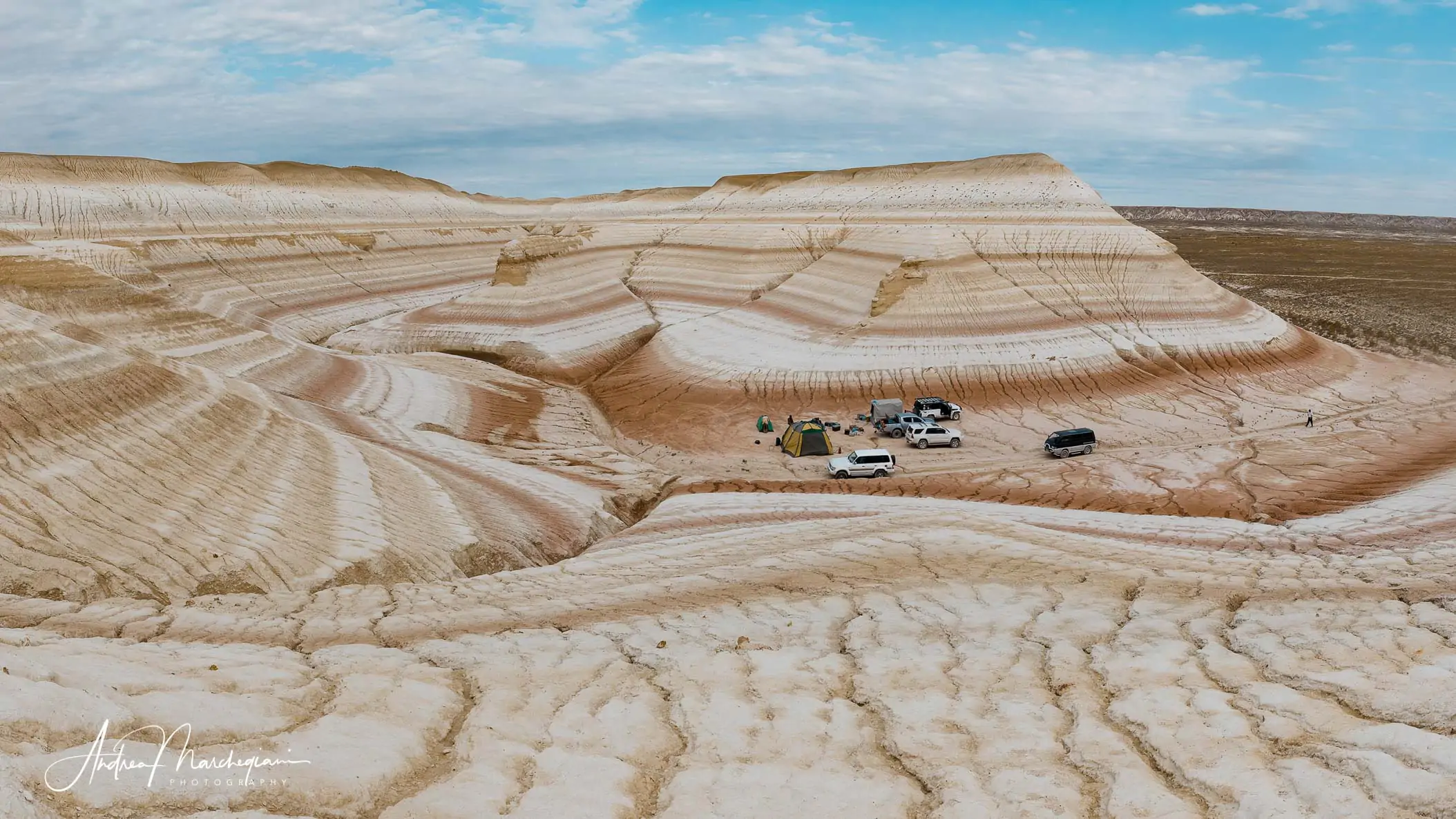
Mangystau and the ancient ocean of Tethys
The next morning we get up early and Sergey invites us for a short trek. We explore part of the area, with all its dreamlike curves and streaks. It looks like a surrealist setting. If behind a dune I saw a camel wearing a pink tutu, I would take note without blinking.
Sergey shows us a shark tooth he found on the ground (or did he pull it out from his pocket?). This area, as well as the entire Ustyurt plateau, was once covered by the Tethys Ocean. We’re talking about 250 million years ago. Then the ancient plates approached until they closed, bringing Asia and Africa to their present position.
The Tethys Ocean disappeared, but left traces of itself in the Mediterranean Sea, the Caspian Sea and Lake Aral. They border the Ustyurt plateau to the west and east. The Mangystau massifs reveal their past thanks to the numerous fossil remains that are easy to come by.
Our trek ends too soon. We would have stayed here for hours, but the jeeps are waiting for us.
Sergey approaches me with a serious look. “Andrea, are you really going to write a piece about me?”. Maybe he thinks I wanted to make fun of him.
“You bet!” I answer.
“Well, thank you!”
You are very welcome.

